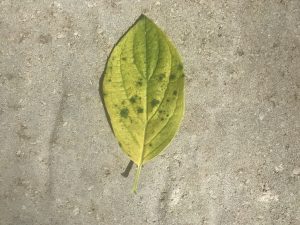Not known Incorrect Statements About Hydrangea Leaves Turning Yellow
Table of ContentsSome Known Details About Hydrangea Leaves Turning Yellow Not known Incorrect Statements About Hydrangea Leaves Turning Yellow How Hydrangea Leaves Turning Yellow can Save You Time, Stress, and Money.Unknown Facts About Hydrangea Leaves Turning YellowThe Hydrangea Leaves Turning Yellow StatementsA Biased View of Hydrangea Leaves Turning Yellow
These problems are simple to identify and deal with if you take actions before origin rot collections in. A dampness meter can help direct you to the finest method of correction. Huge leaves typically look sagging throughout the afternoon warm. When they fail to liven up in the evening or still look wilted in the early morning, your plant might be overwatered.Remove the plant from the dirt and prune out any origins that aren't white and swollen (plump). Do not try to correct the problem by sprinkling exceedingly.

Facts About Hydrangea Leaves Turning Yellow Revealed
also first appears on the older leaves, however the fallen leave blood vessels stay eco-friendly. A magnesium shortage appears first on old fallen leaves and need to not be perplexed with an iron deficiency [Photo: izzzy71/ Shutterstock. com] While there is typically adequate iron in all-natural dirt, hydrangeas often battle to soak up enough of it.
The finest way to prevent iron deficiency-chlorosis in hydrangeas is to plant them in suitable ericaceous or acidic dirt. When growing in a bed, mix in some peat or reduced-peat ericaceous garden compost and inspect the p, H worth annually. This is necessary since the compost mixture around the plants will influence the p, H worth of the soil in the long run and the p, H worth might climb once again.

Fascination About Hydrangea Leaves Turning Yellow
September is the very best season to do something concerning those hydrangeas. Their fallen leaves are transforming yellow, the flowers have actually faded, and their gangly appearance is making you crazy. Beginning with the existing flowers, currently is the time to cut them for dried arrangements. If you cut the gigantic flowers previously in the season, they will wilt.
Now to face the staying shrub, not a quite sight as wintertime approaches. Mophead, Lacecap and Oakleaf hydrangeas bloom on old wood. What that means is they will flower next year on wood that was formed this year. Do not prune Mophead, Lacecaps and Oakleaf hydrangeas to the ground, as you will eliminate the stems that prepare to bloom following springtime.
That means you will not be removing too several of Get More Information following year's flower buds. If the bush is getting bigger than you like, you can take out a third of the real-time timber while you're in there.
Things about Hydrangea Leaves Turning Yellow
We're appropriate in the middle of our late-blooming hydrangea season here, so I assumed I would certainly share a suggestion for this certain sort of hydrangea that I located truly intriguing. A great deal of people have a comparable concern with their panicle hydrangeas where they begin to see the fallen leaves turning yellow and leaving at various components of the season and it can be quite significant and quite worrying due to the fact that it can take place really rapidly on a shrub that appears like it's or else actually healthy.
I've shared it on Instagram before, but I understood I have actually never ever told you about this in an actual, complete post, so today I'm taking treatment of that. When I state that this relates to panicle hydrangeas, that implies the type of hydrangeas that generally flower later on in summertime, normally around August.
Where we live in zone 6, they're rather very easy to have success with and they're actually preferred in our area, which is terrific because that indicates that there are hydrangeas practically almost everywhere currently of year. When you see your hydrangea leaves starting to turn yellow, you could think that your plant is dying or being abused in some way, but actually, the opposite is moved here true.
5 Easy Facts About Hydrangea Leaves Turning Yellow Shown

Courtenay is the author of the publication The Cleaning Ninja and has actually been included in various publications consisting of Nation Sampler Farmhouse Design, Better Homes and Gardens, Parents Publication, Real Simple, and Our check these guys out Residences.
Waterlogged soil deprives the roots of oxygen, resulting in root rot and yellow leaves. On the other hand, underwatering or dehydration creates the plant to shrivel and its foliage to yellow. Maintaining a constant watering routine and making certain proper water drainage through drainage holes or layers can assist stop these issues.
How Hydrangea Leaves Turning Yellow can Save You Time, Stress, and Money.
With correct treatment and maintenance, hydrangeas can prosper and keep their vivid, vivid leaves. Hydrangea leaves turning yellow is a common problem that can be attributed to various elements (Hydrangea Leaves Turning Yellow).
The sort of yellowing seen (e. g. the placement of the impacted leaves on the plant, and/or the pattern and position of the yellowing on the leaf itself) will usually differ according to the cause. The chlorosis is frequently accompanied by other signs providing more ideas as to the reason, e.Instances consist of sap-sucking pests such as aphids, red spider mites and whiteflies, and root feeders such as creeping plant weevil and cabbage origin fly. Once more it is commonly feasible to find the wrongdoer on the fallen leaves or among the origins.